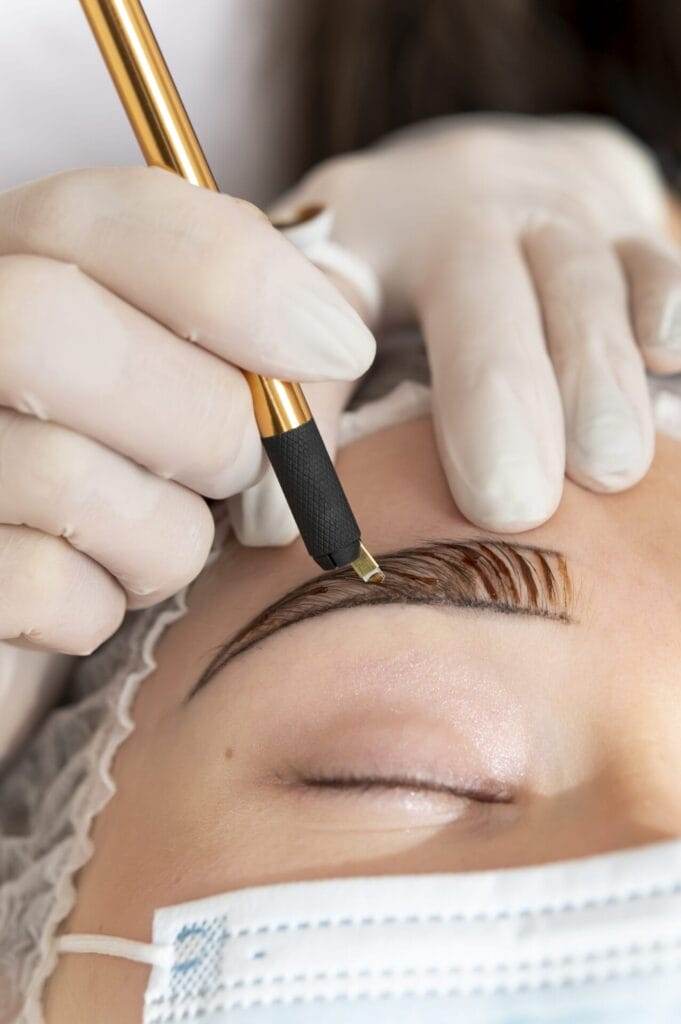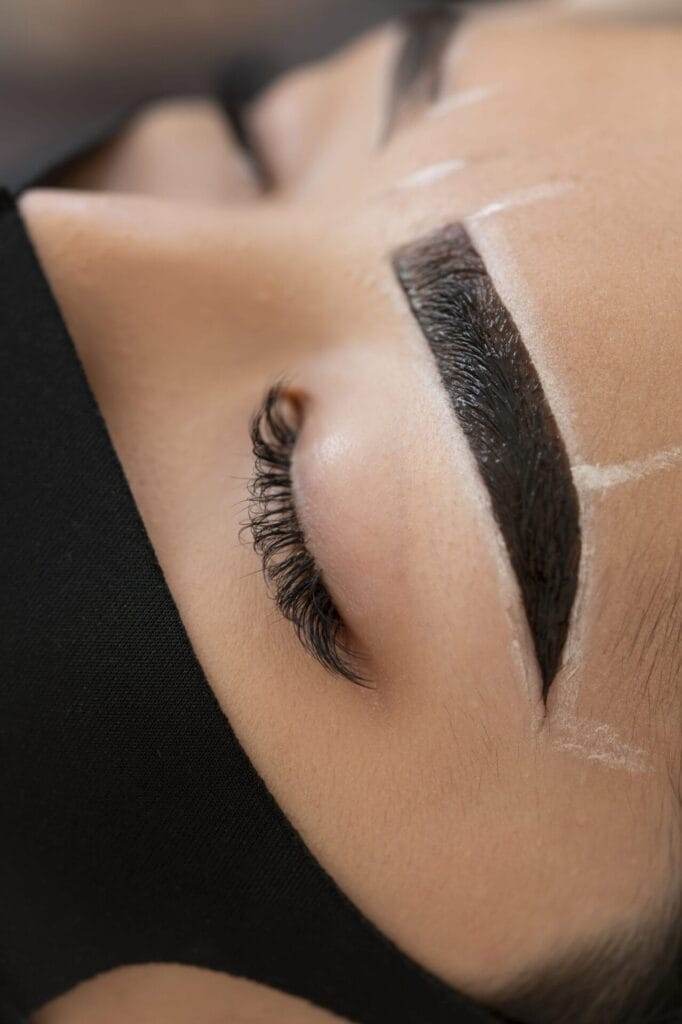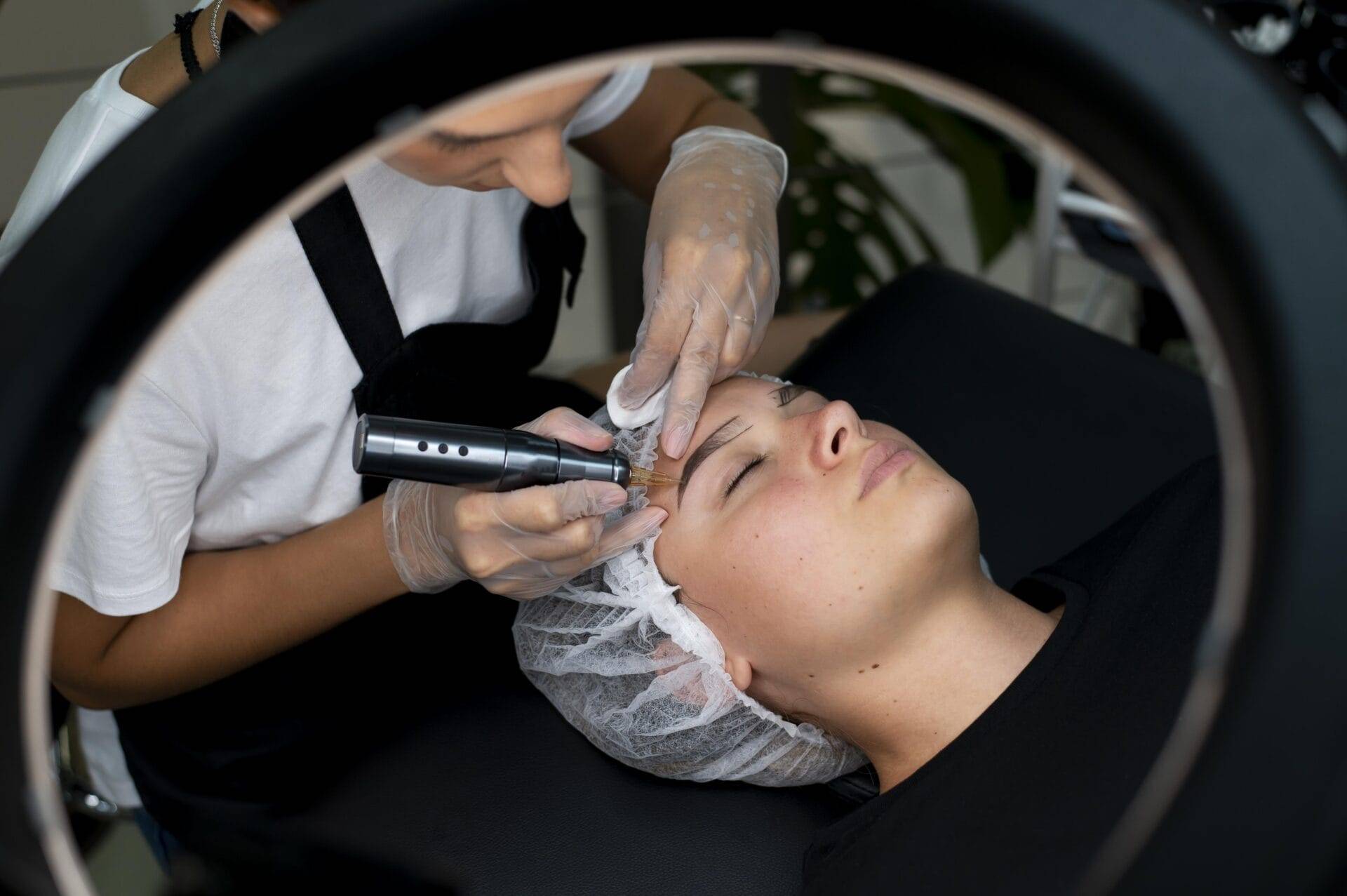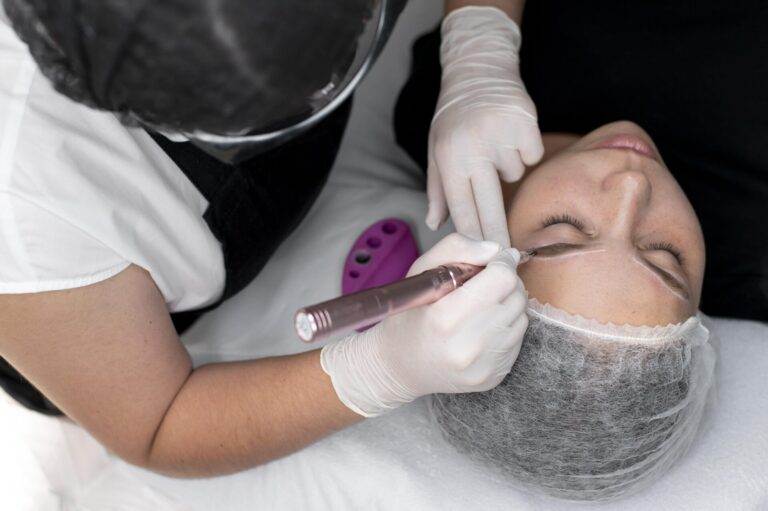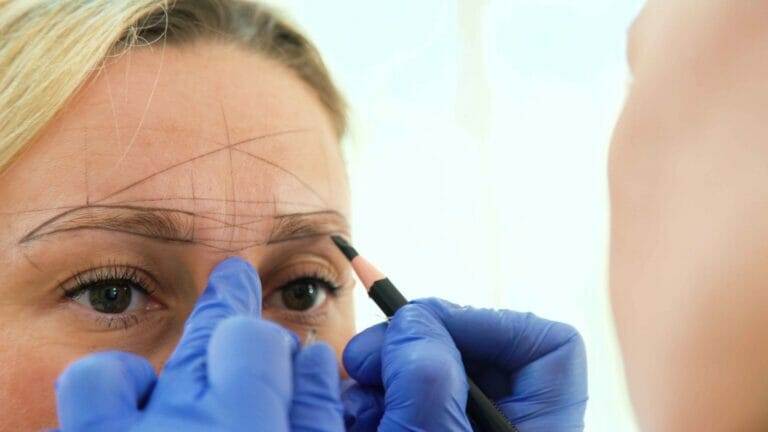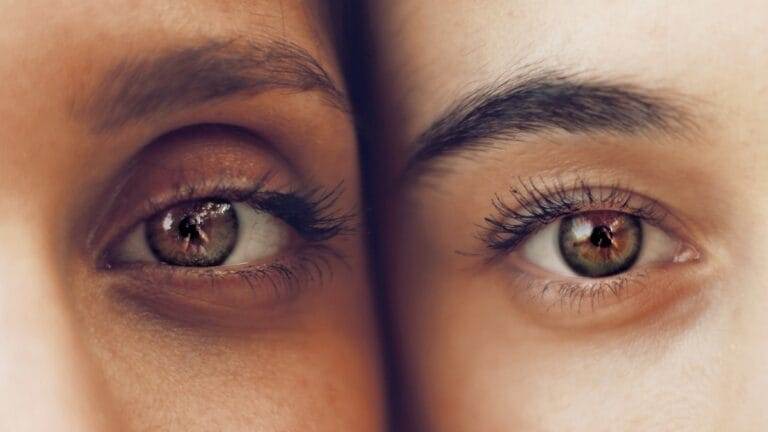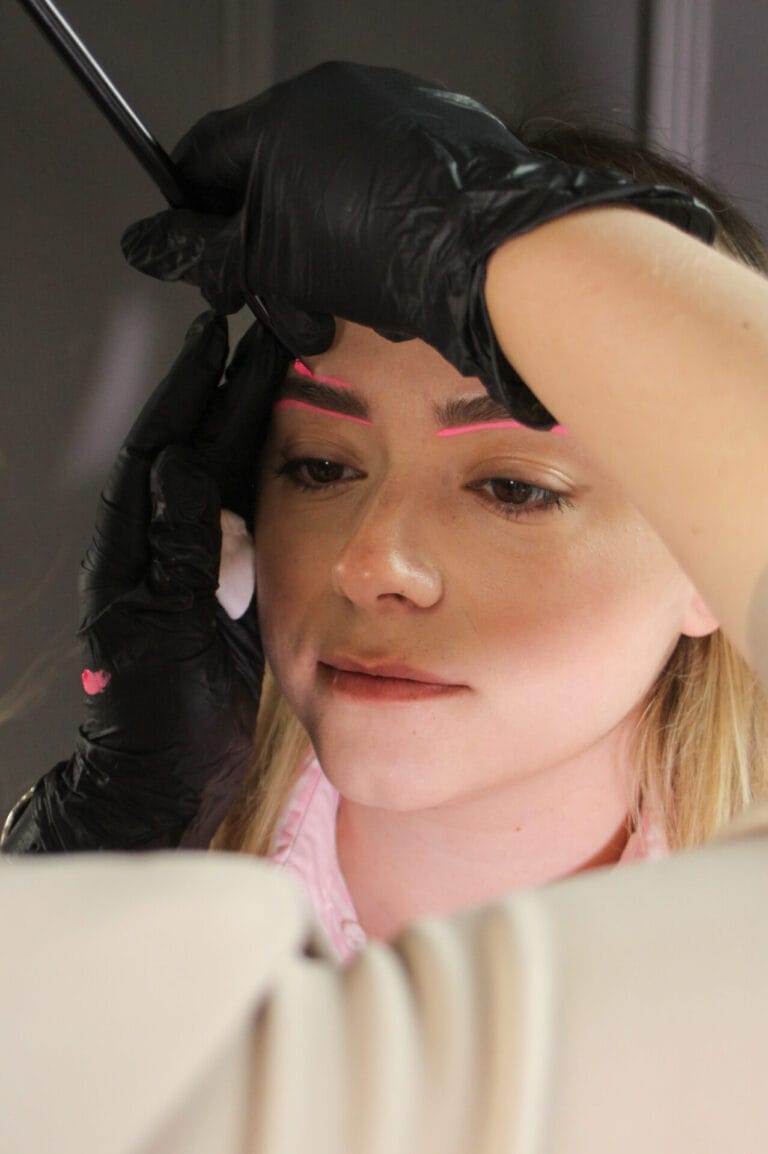Microblading is a semi-permanent cosmetic procedure that involves the use of a handheld tool to create hair-like strokes on the eyebrows. It is a form of eyebrow tattooing, but differs from traditional tattooing in several ways. Unlike traditional tattooing, which uses a machine and ink to create a solid line, microblading uses a manual tool and pigment to create individual hair-like strokes that mimic the natural appearance of eyebrows.
The process of microblading begins with a consultation with a trained and certified microblading artist. During this consultation, the artist will assess the client’s natural eyebrow shape, color, and desired outcome. They will then use a pencil to outline the desired shape of the eyebrows and choose a pigment color that matches the client’s natural hair color.
Once the client is satisfied with the proposed shape and color, the microblading process can begin. The artist will use a sterile, disposable blade attached to a handheld tool to create small incisions in the skin. The pigment is then applied to these incisions, creating the appearance of individual eyebrow hairs. The process is repeated until the desired fullness and shape is achieved.
The Benefits of Microblading: Why it’s the Ultimate Beauty Hack
One of the main benefits of microblading is that it saves time on daily makeup routine. With microbladed eyebrows, there is no need to spend time filling in sparse areas or shaping the brows with makeup every day. The results of microblading can last up to two years, so you can wake up with perfect brows every morning without any effort.
Another benefit of microblading is that it creates a natural-looking eyebrow shape. Unlike traditional tattooing, which can result in harsh and unnatural-looking brows, microblading creates individual hair-like strokes that blend seamlessly with your natural brow hairs. This technique allows for a more realistic and natural appearance, enhancing your overall facial features.
Microblading also provides long-lasting results. While traditional eyebrow makeup may smudge or fade throughout the day, microbladed eyebrows stay put and maintain their shape and color. This means you can enjoy beautiful brows that require minimal touch-ups or maintenance.
In addition to the practical benefits, microblading can also boost your confidence. Many people feel self-conscious about their eyebrows, whether they are sparse, uneven, or over-plucked. Microblading can help to correct these issues and give you the brows you’ve always dreamed of. Having well-defined and symmetrical eyebrows can make a big difference in your overall appearance and self-esteem.
How Microblading Can Transform Your Look: Before and After Examples
To truly understand the transformative power of microblading, it’s helpful to see some real-life examples. Many people who have undergone microblading have shared their before and after photos online, showcasing the dramatic difference it can make.
One common issue that microblading can address is sparse or thin eyebrows. By creating hair-like strokes in areas where hair is lacking, microblading can give the appearance of fuller and more defined eyebrows. This can completely transform a person’s face, making them look more youthful and vibrant.
Microblading can also enhance facial features by creating a more symmetrical and balanced appearance. Uneven or asymmetrical eyebrows can throw off the balance of the face and make certain features appear more prominent or exaggerated. By carefully shaping and filling in the eyebrows, microblading can help to create a more harmonious and balanced look.
Overall, microblading has the power to completely transform a person’s look by enhancing their natural beauty and correcting any eyebrow-related issues they may have.
The Microblading Process: What to Expect During the Procedure
Before undergoing a microblading procedure, there are a few steps that need to be taken to ensure the best possible results. First, it is important to find a reputable and experienced microblading artist. Research potential artists in your area and read reviews and testimonials from previous clients. Look for artists who are certified and licensed, as this ensures they have received proper training and adhere to strict safety standards.
Once you have chosen an artist, you will have a consultation where you can discuss your desired outcome and any concerns or questions you may have. The artist will assess your natural eyebrow shape and color, and work with you to create a shape that suits your face and preferences. They will also perform a patch test to check for any allergies or sensitivities to the pigment.
On the day of the procedure, the artist will begin by numbing the area with a topical anesthetic to minimize any discomfort. They will then use a sterile, disposable blade attached to a handheld tool to create small incisions in the skin. The pigment is applied to these incisions, creating the appearance of individual eyebrow hairs.
The process can take anywhere from one to three hours, depending on the desired fullness and shape of the eyebrows. It is important to note that microblading is not completely painless, but most people report minimal discomfort during the procedure.
Microblading Aftercare: How to Ensure the Best Results
Proper aftercare is essential for ensuring the best possible results from your microblading procedure. Here are some tips for taking care of your newly microbladed eyebrows:
1. Follow the aftercare instructions provided by your artist: Your microblading artist will provide you with specific aftercare instructions that you should follow closely. This may include avoiding certain activities or products, such as swimming or using harsh cleansers on your face.
2. Keep the area clean and dry: In the first few days following the procedure, it is important to keep the area clean and dry to prevent infection. Avoid touching or scratching your eyebrows, and avoid getting them wet for at least 24 hours.
3. Apply a healing ointment: Your artist may provide you with a healing ointment to apply to your eyebrows in the days following the procedure. This will help to keep the area moisturized and promote healing.
4. Avoid certain activities and products: During the healing process, it is important to avoid certain activities and products that can interfere with the healing process or cause the pigment to fade prematurely. This may include avoiding excessive sweating, sun exposure, or using certain skincare products on your face.
5. Schedule touch-up appointments: Microblading is a two-step process, and it is common to require a touch-up appointment 4-6 weeks after the initial procedure. This touch-up appointment allows the artist to make any necessary adjustments and ensure that the pigment has fully settled.
By following these aftercare instructions, you can ensure that your microblading results last as long as possible and look their best.

Microblading vs. Traditional Eyebrow Makeup: Which is Better?
When it comes to achieving perfect eyebrows, there are several options to choose from. Two popular options are microblading and traditional eyebrow makeup. Here is a comparison of the pros and cons of each option:
Microblading:
– Pros: Microblading provides long-lasting results, with the effects lasting up to two years. It saves time on daily makeup routine, as there is no need to fill in or shape the brows with makeup. Microbladed eyebrows also create a natural-looking shape that enhances facial features.
– Cons: Microblading is a more expensive option compared to traditional eyebrow makeup. It also requires a longer initial procedure and a touch-up appointment to achieve the desired results.
Traditional Eyebrow Makeup:
– Pros: Traditional eyebrow makeup is a more affordable option compared to microblading. It allows for more flexibility in terms of shape and color, as you can easily change your brow look with different products. Traditional eyebrow makeup is also less permanent, so you can experiment with different styles without committing to a long-term look.
– Cons: Traditional eyebrow makeup requires daily application and touch-ups throughout the day. It can smudge or fade, especially in hot or humid weather. Traditional eyebrow makeup may also require more skill and practice to achieve a natural-looking result.
Ultimately, the choice between microblading and traditional eyebrow makeup depends on personal preference, budget, and lifestyle. Some people may prefer the convenience and long-lasting results of microblading, while others may prefer the flexibility and affordability of traditional eyebrow makeup.
Microblading for Different Skin Types: How to Achieve the Perfect Look
Microblading can be done on various skin types, but there are some tips and considerations to keep in mind for achieving the best results based on your skin type:
Oily Skin:
– Oily skin can pose a challenge for microblading, as the excess oil can cause the pigment to fade faster. To achieve the best results, it is important to properly prepare the skin before the procedure. This may include using an oil-control cleanser or toner in the days leading up to the procedure. It is also important to follow the aftercare instructions provided by your artist, as this will help to maintain the pigment and prevent excessive oiliness.
Dry Skin:
– Dry skin can also pose a challenge for microblading, as it may not retain the pigment as well as other skin types. To achieve the best results, it is important to properly moisturize the skin leading up to the procedure. This may include using a hydrating serum or moisturizer in the days leading up to the procedure. It is also important to follow the aftercare instructions provided by your artist, as this will help to maintain moisture in the skin and prevent excessive dryness.
Normal/Combination Skin:
– Normal or combination skin is generally well-suited for microblading. However, it is still important to properly prepare and care for the skin before and after the procedure. This may include using a gentle cleanser and moisturizer in the days leading up to the procedure, and following the aftercare instructions provided by your artist.
By following these tips and considerations, you can achieve the best possible results from your microblading procedure, regardless of your skin type.
How Long Does Microblading Last? Understanding the Maintenance Process
Microblading is a semi-permanent cosmetic procedure, which means that the results are not permanent and will fade over time. The lifespan of microblading can vary depending on several factors, including skin type, lifestyle, and aftercare.
On average, microblading can last anywhere from one to two years. However, it is important to note that the pigment will gradually fade over time, and touch-up appointments may be required to maintain the desired shape and color.
To maintain the results of microblading over time, it is important to follow proper aftercare and maintenance. This may include avoiding excessive sun exposure, using sunscreen on the eyebrows, and avoiding certain skincare products or treatments that can cause the pigment to fade.
It is also important to schedule touch-up appointments with your microblading artist as needed. These touch-up appointments allow the artist to make any necessary adjustments and refresh the pigment to maintain the desired look.
By following proper aftercare and scheduling touch-up appointments as needed, you can maintain the results of your microblading procedure for as long as possible.
Microblading Safety: What You Need to Know Before Getting the Procedure
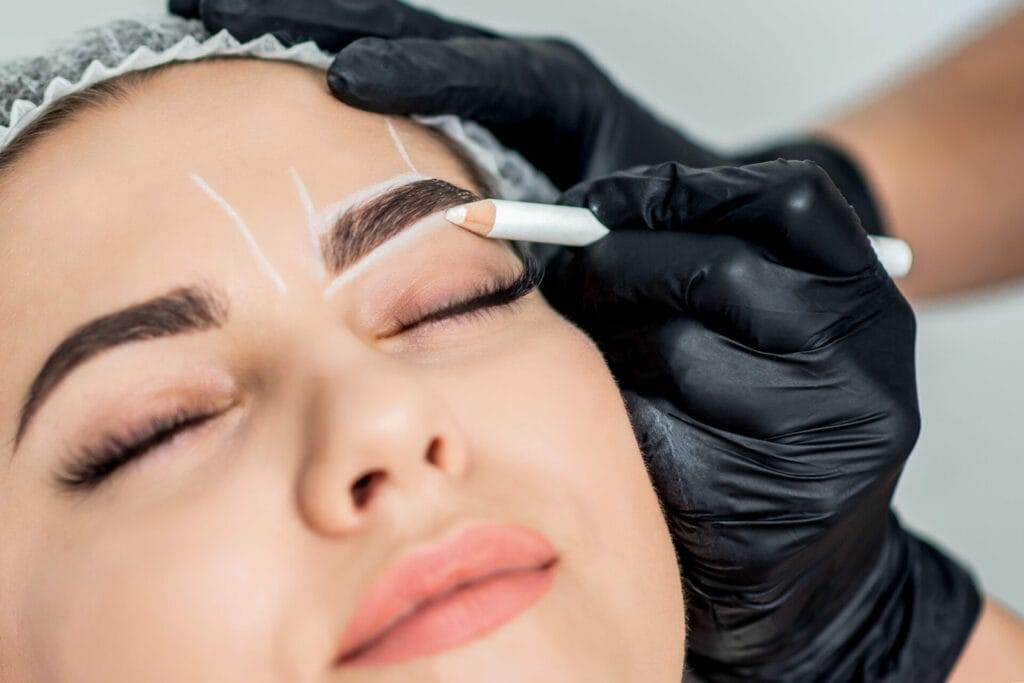
While microblading is generally considered safe when performed by a trained and certified professional, there are some potential risks and complications to be aware of. It is important to understand these risks before getting the procedure.
One potential risk of microblading is infection. The procedure involves creating small incisions in the skin, which can increase the risk of infection if proper hygiene practices are not followed. It is important to choose a reputable and experienced microblading artist who follows strict safety standards and uses sterile equipment.
Another potential risk is an allergic reaction to the pigment used in microblading. Before undergoing the procedure, your artist should perform a patch test to check for any allergies or sensitivities. If you have a history of allergies or sensitivities, it is important to discuss this with your artist before the procedure.
In some cases, microblading can result in scarring or keloid formation. This is more likely to occur in individuals with a history of scarring or keloid formation. It is important to discuss any concerns or previous scarring with your artist before the procedure.
To ensure a safe and successful microblading procedure, it is important to choose a reputable and experienced artist, follow proper aftercare instructions, and communicate any concerns or allergies with your artist.
Microblading Myths Debunked: Separating Fact from Fiction
There are several common misconceptions about microblading that can cause confusion or hesitation for those considering the procedure. Here are some myths about microblading debunked:
Myth 1: Microblading is painful.
Fact: While microblading is not completely painless, most people report minimal discomfort during the procedure. The artist will apply a topical anesthetic to numb the area before beginning the procedure, which helps to minimize any discomfort.
Myth 2: Microblading looks unnatural.
Fact: When done by a skilled and experienced artist, microblading can create natural-looking results that blend seamlessly with your natural brow hairs. The artist will work with you to create a shape and color that suits your face and preferences.
Myth 3: Microblading is permanent.
Fact: Microblading is a semi-permanent cosmetic procedure, which means that the results will fade over time. The pigment used in microblading is not implanted as deeply into the skin as traditional tattooing, so it will naturally break down and fade over a period of 1-3 years. Factors such as sun exposure, skincare routine, and individual skin type can also affect how long the results last. Touch-up sessions are typically recommended every 12-18 months to maintain the desired look.


